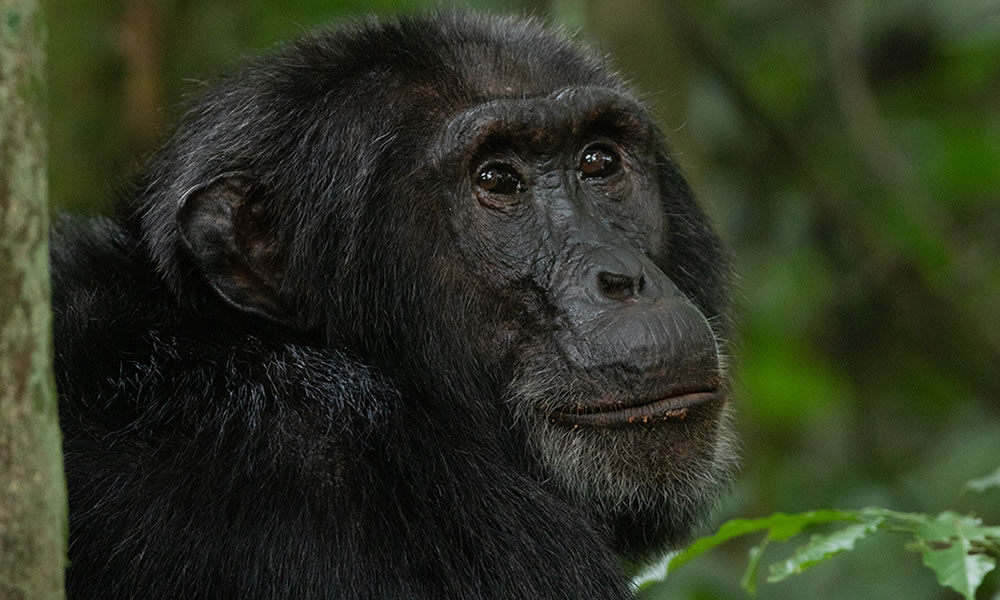The most well-liked activity in Kibale is the Kanyanchu Primate Walk. Though there are thirteen species to seek and a good range of diurnal monkeys to be encountered, the chimpanzees are the real stars of this path. Since 1993, Kanyanchu’s chimps have been tracked, and there is a good likelihood that they will be found. Depending on a number of variables, guided walks begin between 8 a.m. and 2 p.m. and last an average of three hours.

You may see chimpanzees in their natural environment by going on the always well-liked primate walk. Finding Kanyanchu’s groups is over 90% likely because they are used to human presence, some have been seen for over 25 years. Walks run two to five hours and depart from the Kanyanchu Visitor Centre at eight, eleven, and fourteen. It is advised to arrive early to allow for registration and briefing. The maximum number of people in a group is six, and the duration of time spent with chimpanzees is one hour. Participants must be sixteen years of age or older. Reservations must be made in advance.
A further 120 mammals, including many primate species like baboons and chimpanzees, as well as elephants and antelopes, find refuge in this biologically varied area. This forest is home to about 370 different kinds of birds, 23 of which are endemic to the Albertine Rift. The Nahan’s francolin, lowland masked apalis, blue headed bee-eater, and cassin’s spinetail.
The most notable of Kibale’s primates is the about 1,500-person chimpanzee population, which is split into at least a dozen distinct societies, four of which have acclimated to human habitation. Since 1993, the Kanyantale community has been the target of daily tourist tracking.
Things to do in Kibale Forest National Park
Chimpanzee Trekking
A primary draw for many visitors to Kibale National Park, chimpanzees are among the main reasons people travel to Uganda: to see these incredible, stunning animals in their natural habitat. Perhaps the best area in the world to track chimpanzees is Kibale National Park, home to around 1500 of the primates. The rangers at the Kanyanchu visitor centre provide a briefing before the 8 a.m. start of chimpanzee trekking in Kibale. Important details about the activity, like what to expect, how long it will take, and how to behave around the primates, are covered in the briefing. The rangers will also provide some background information about the chimpanzees and the forest in general. It’s time to venture into the jungle after the briefing.
Bird Watching
One of the greatest spots in Uganda to go bird watching is the Kibale Forest. Uganda is home to an amazing variety of species. A few of the more than 375 species that are available are the African Grey Parrot, Olive Long-Tailed Cuckoo, Pygmy Kingfisher, Western Green Tinker Bird, Double-toothed Barbet, Great Blue Turaco, Blue-breasted Kingfisher, Blue-spotted Wood Dove, Pygmy Kingfisher, Lizard Buzzard, Little Greenbul, and Black and White Casqued Hornbill.
Chimpanzee Habituation Experience
Before chimpanzee trekking can start, the habituated chimps in Kibale must spend two years becoming acclimated to humans. This is the only location that allows you to witness chimpanzees leaving their overnight nests before they begin their daily routine of eating, hunting, copulating, nursing, patrolling, and resting until they break off for the night by constructing new nests at approximately 7pm. The experience is only available here, along with the rangers and research staff.
Guided Nature Walks
In Kibale National Park, nature walks are organised to provide visitors with the chance to get up close and personal with forest animals such as butterflies, birds, insects, and monkeys. Three sessions are scheduled for the nature walks: two in the morning and one in the afternoon. The trip can last up to three hours and begins at the Kanyanchu Tourist Centre. You will come across a number of little primates and birds as you travel. If you’re lucky, you could even spot the chimpanzees on one of the well-trod paths. Because you are concentrating on finding the chimps, the chimpanzee trekking may not give you enough time to really see the vast variety of the jungle. Here you are able to spot more variety of birds and animals, bush pigs, duikers, and or elephants.
Nocturnal Walks
You might choose to go on night hikes to observe the nocturnal animals, who are out and about in quest of food while the other forest dwellers sleep. Using strong torches, the rangers search for nocturnal animals like potto, hyrax, bush baby, and occasionally serval cats and civets for 2.5 hours starting at 7 p.m.
Bigodi Wetland Sanctuary
One of Uganda’s greatest locations for bird watching is the Bigodi Wetlands, which is near the Kibale Forest. It’s also an excellent site to see butterflies and primates. Under the supervision of an experienced guide, participants will stroll a 4.5-kilometer track to see over 139 different kinds of birds. The Kibale Association for Rural Development (KAFRED), a community-based organisation, is in charge of overseeing the Bigodi Wetland Sanctuary. The Magombe Swamp is overseen by the same organisation. Using boardwalks and established routes, KAFRED arranges hikes around the wetlands. Numerous birds use the papyrus in the marsh as breeding sites, due to its lush vegetation. About eight distinct species of monkeys, including the grey-cheeked mangabey, and about 200 different kinds of birds can be found in this sanctuary. Swamp hikes lasting two to three hours will take you through small towns, grasslands, and breathtaking landscapes.
Best time to visit Kibale Forest National Park
Since roads become impassable, muddy, and slippery during the rainy season, which spans from October through December and March through May, the best time to visit is during the dry months of January and February, when animals like to congregate around bodies of water. The park is open year-round and can be visited at any time of the year, despite Uganda’s climate.
